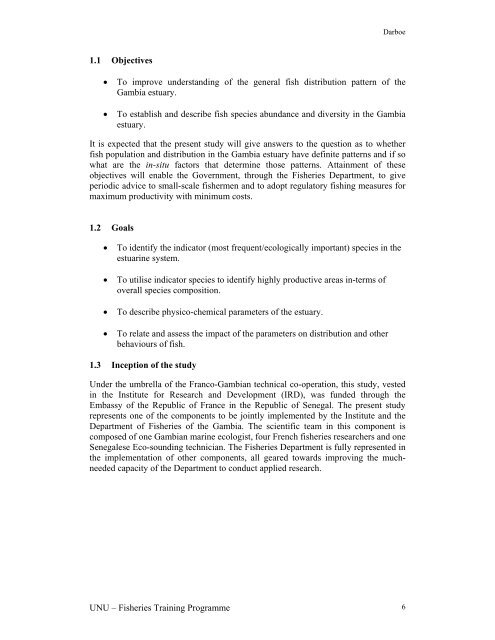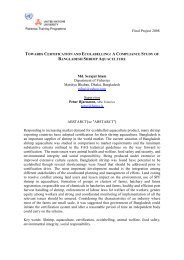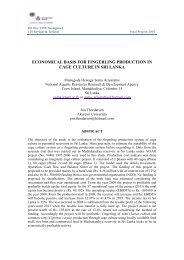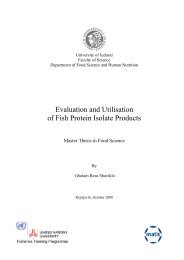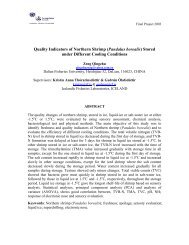Fish species abundance and distribution in The Gambia estuary
Fish species abundance and distribution in The Gambia estuary
Fish species abundance and distribution in The Gambia estuary
You also want an ePaper? Increase the reach of your titles
YUMPU automatically turns print PDFs into web optimized ePapers that Google loves.
Darboe1.1 Objectives• To improve underst<strong>and</strong><strong>in</strong>g of the general fish <strong>distribution</strong> pattern of the<strong>Gambia</strong> <strong>estuary</strong>.• To establish <strong>and</strong> describe fish <strong>species</strong> <strong>abundance</strong> <strong>and</strong> diversity <strong>in</strong> the <strong>Gambia</strong><strong>estuary</strong>.It is expected that the present study will give answers to the question as to whetherfish population <strong>and</strong> <strong>distribution</strong> <strong>in</strong> the <strong>Gambia</strong> <strong>estuary</strong> have def<strong>in</strong>ite patterns <strong>and</strong> if sowhat are the <strong>in</strong>-situ factors that determ<strong>in</strong>e those patterns. Atta<strong>in</strong>ment of theseobjectives will enable the Government, through the <strong>Fish</strong>eries Department, to giveperiodic advice to small-scale fishermen <strong>and</strong> to adopt regulatory fish<strong>in</strong>g measures formaximum productivity with m<strong>in</strong>imum costs.1.2 Goals• To identify the <strong>in</strong>dicator (most frequent/ecologically important) <strong>species</strong> <strong>in</strong> theestuar<strong>in</strong>e system.• To utilise <strong>in</strong>dicator <strong>species</strong> to identify highly productive areas <strong>in</strong>-terms ofoverall <strong>species</strong> composition.• To describe physico-chemical parameters of the <strong>estuary</strong>.• To relate <strong>and</strong> assess the impact of the parameters on <strong>distribution</strong> <strong>and</strong> otherbehaviours of fish.1.3 Inception of the studyUnder the umbrella of the Franco-<strong>Gambia</strong>n technical co-operation, this study, vested<strong>in</strong> the Institute for Research <strong>and</strong> Development (IRD), was funded through theEmbassy of the Republic of France <strong>in</strong> the Republic of Senegal. <strong>The</strong> present studyrepresents one of the components to be jo<strong>in</strong>tly implemented by the Institute <strong>and</strong> theDepartment of <strong>Fish</strong>eries of the <strong>Gambia</strong>. <strong>The</strong> scientific team <strong>in</strong> this component iscomposed of one <strong>Gambia</strong>n mar<strong>in</strong>e ecologist, four French fisheries researchers <strong>and</strong> oneSenegalese Eco-sound<strong>in</strong>g technician. <strong>The</strong> <strong>Fish</strong>eries Department is fully represented <strong>in</strong>the implementation of other components, all geared towards improv<strong>in</strong>g the muchneededcapacity of the Department to conduct applied research.UNU – <strong>Fish</strong>eries Tra<strong>in</strong><strong>in</strong>g Programme 6


